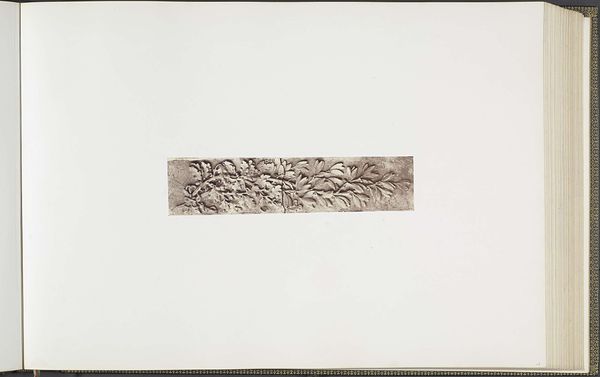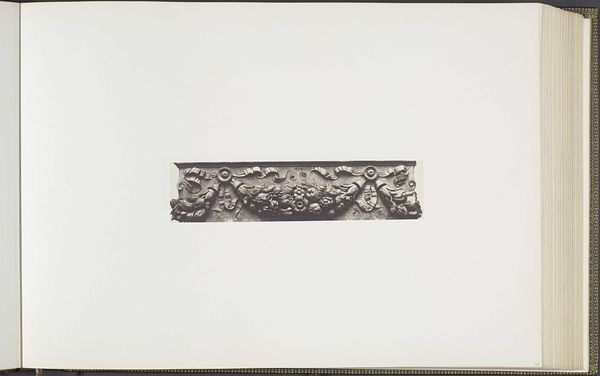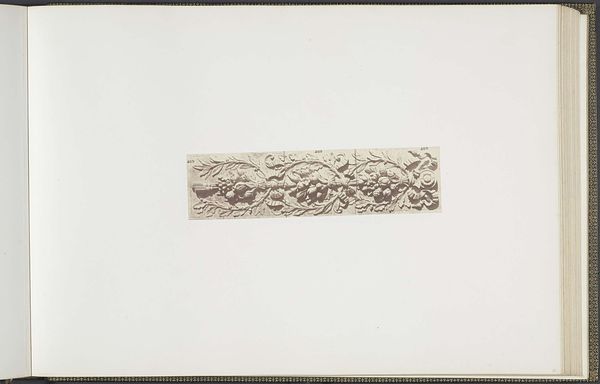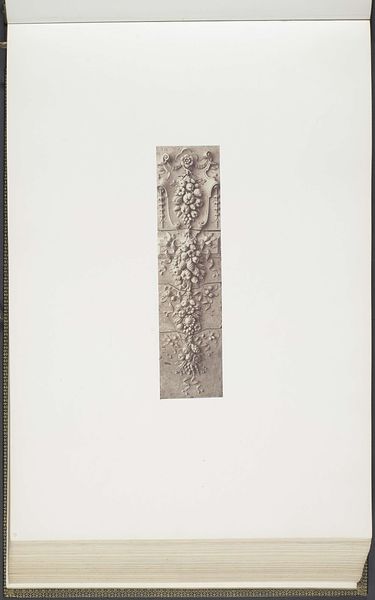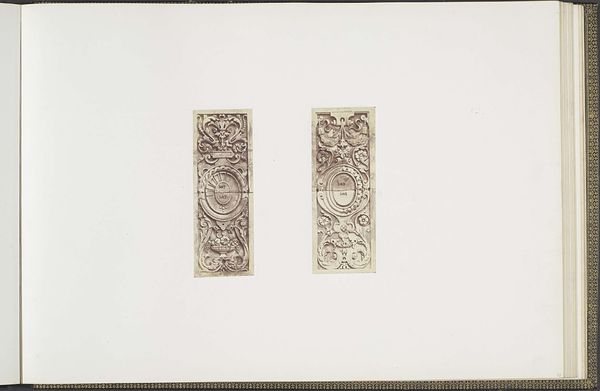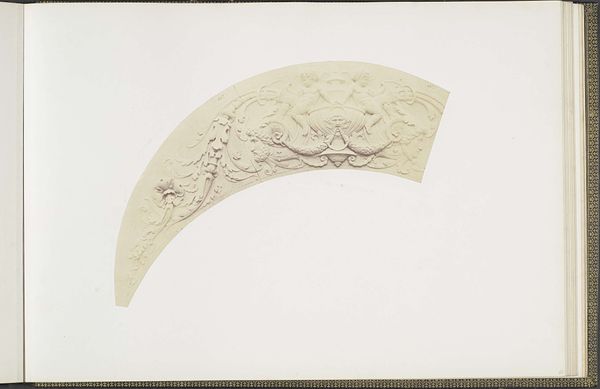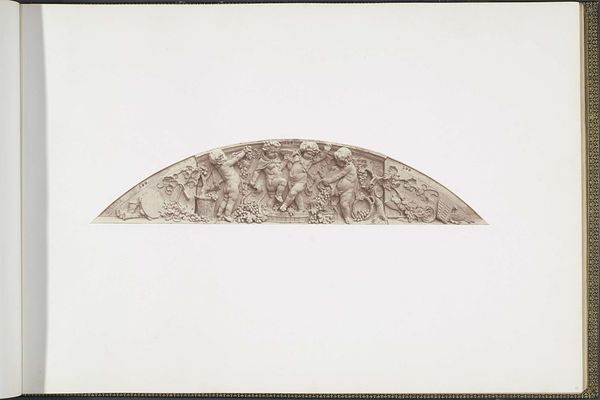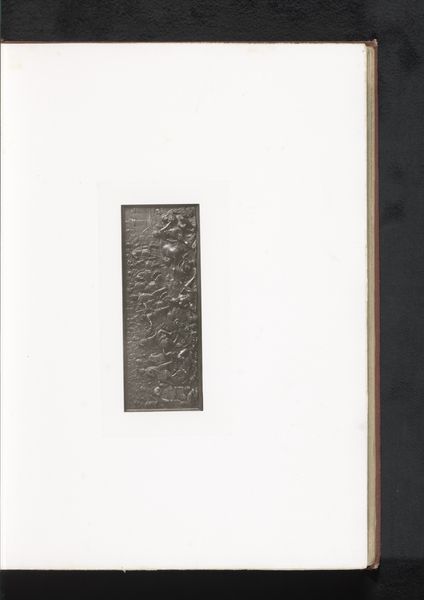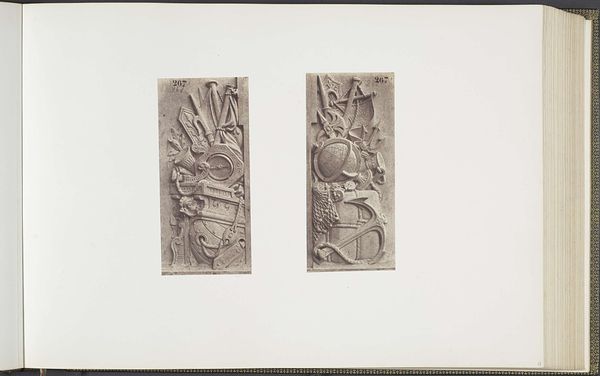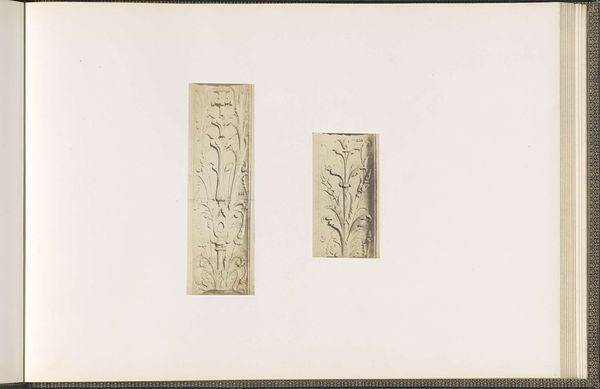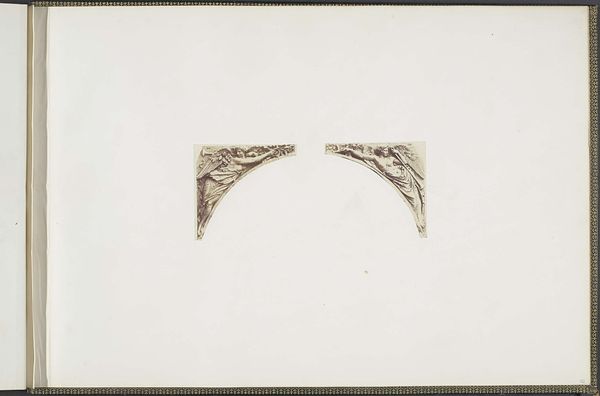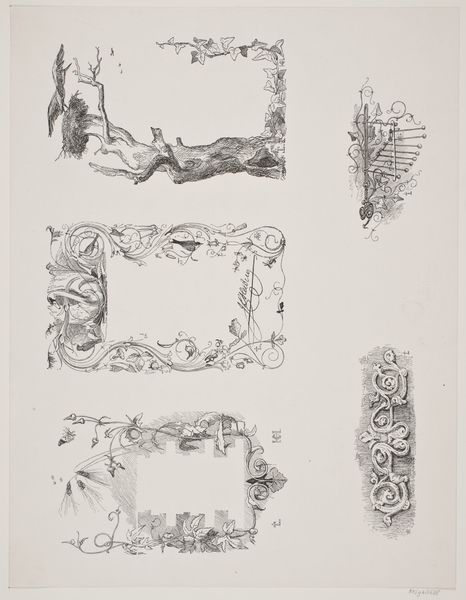
Detail van een gipsmodel voor het fries op het Palais du Louvre door Léon Falconnier c. 1855 - 1857
0:00
0:00
edouardbaldus
Rijksmuseum
drawing, print, etching, relief, paper, photography
#
drawing
#
neoclacissism
# print
#
etching
#
relief
#
classical-realism
#
paper
#
form
#
photography
#
geometric
Dimensions: height 378 mm, width 556 mm
Copyright: Rijks Museum: Open Domain
Curator: What immediately strikes me is the serene, almost ethereal quality. There's a delicate interplay of light and shadow across these reliefs, which, at first glance, feels rather classical, like something from ancient Greece or Rome. Editor: Indeed, that’s because we're looking at a photograph titled "Detail van een gipsmodel voor het fries op het Palais du Louvre door Léon Falconnier" created circa 1855-1857, now housed here at the Rijksmuseum. Curator: Ah, the Louvre! It speaks to a conscious revival of classical ideals during the Neoclassical period. You see the oak leaves depicted here? The oak has been used as a symbol for so much in art, from deities such as Zeus, but I wonder here if it's connected to its use to represent royalty in the time this photograph was captured. Editor: I find it difficult to disassociate it from France at that period; this era coincides with significant social and political shifts in France, especially with Napoleon III trying to create a new Roman Empire. Displaying classical art reinforced that desire, but at the cost of dismissing more recent art history. Curator: I can't disagree. These types of reliefs were architectural in design but served as symbols of power as well, visually creating an air of authority through artistic grandeur and cultural reference. By visually associating Napoleon's rule to the past he's drawing a clear line of perceived legitimacy, as well. Editor: Exactly. In many ways, an attempt at political messaging written across facades and captured for wider consumption with early photographic technologies. Photography began documenting artworks themselves to preserve this grand facade being displayed in places like the Louvre. Curator: This photograph becomes an interesting artifact then, not just a document but part of the construction of an imperial image. The cool tonality reinforces this, giving everything a sense of detached authority. It’s art creating context through imagery. Editor: Definitely, a photograph reflecting both artistic ambition and a very particular moment of sociopolitical aspiration in French history. Thanks for pointing that out. Curator: My pleasure. It's pieces like these that always reminds you about how symbolism has such far-reaching potential.
Comments
No comments
Be the first to comment and join the conversation on the ultimate creative platform.
